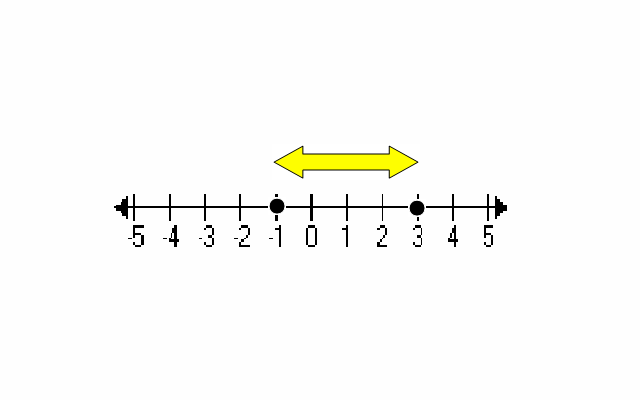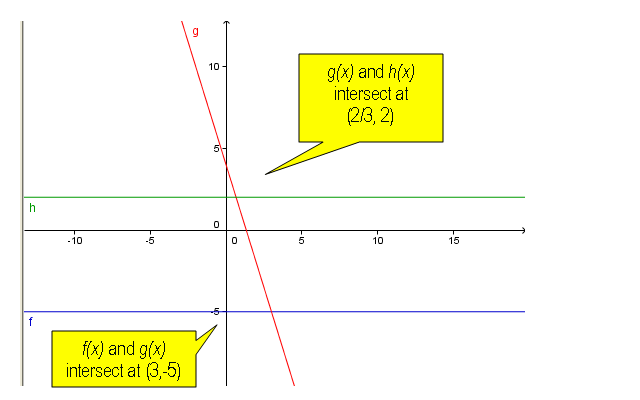Linear Inequality Quiz
.jpg)
This quiz was created to test student understanding at the end of a lesson on how to solve linear inequalities. The students will be required to complete the quiz online during classtime spent in the computer lab.
- 1.
To solve an inequality means to find all values of the variable for which the statement is true.
- A.
True
- B.
False
Correct Answer
A. TrueExplanation
The explanation for the given correct answer is that solving an inequality involves finding all the possible values of the variable that make the statement true. This process often includes using mathematical operations and properties to manipulate the inequality and determine its solution set. By finding these values, one can determine the range of possible solutions for the inequality. Therefore, the statement that solving an inequality means finding all values of the variable for which the statement is true is true.Rate this question:
-
- 2.
Solve the inequality: 4x + 7 ≥ 2x – 3
- A.
X ≥ 2
- B.
X ≥ -2
- C.
X ≥ -5
- D.
X ≤ -5
Correct Answer
C. X ≥ -5Explanation
The correct answer is x ≥ -5 because when we solve the inequality, we subtract 2x from both sides to isolate the variable. This gives us 2x + 7 ≥ -3. Then, we subtract 7 from both sides to get 2x ≥ -10. Finally, we divide both sides by 2 to find that x ≥ -5.Rate this question:
-
- 3.
The following illustration represents the interval [-1, 3)
- A.
True
- B.
False
Correct Answer
B. FalseExplanation
The given interval is represented by the notation [-1, 3), which means that it includes all real numbers greater than or equal to -1 and less than 3. The interval includes -1 but does not include 3. Therefore, the statement "The following illustration represents the interval [-1, 3)" is false.Rate this question:
-
- 4.
Two inequalities having exactly the same solution set are called
Correct Answer
equivalent inequalitiesExplanation
Two inequalities are called equivalent if they have exactly the same solution set. This means that for any given value, if it satisfies one inequality, it will also satisfy the other inequality. In other words, the two inequalities are interchangeable and represent the same set of values.Rate this question:
- 5.
Write the following inequalities using interval notation: x < -4 and -2 ≤ x < 7
- A.
(-∞, -4) and [-2, 7)
- B.
(-4, ∞) and [-2, 7)
- C.
(-∞, -4) and (-2, 7)
- D.
[-∞, -4] and [-2, 7]
Correct Answer
A. (-∞, -4) and [-2, 7)Explanation
The first inequality, x < -4, can be represented in interval notation as (-∞, -4), which means that x can take any value less than -4. The second inequality, -2 ≤ x < 7, can be represented as [-2, 7), which means that x can take any value greater than or equal to -2, but less than 7. Therefore, the correct answer is (-∞, -4) and [-2, 7).Rate this question:
-
- 6.
Fill in the blank with the correct inequality symbol: • •If x ≥ 5, then -4x ______ -20
- A.
≥
- B.
<
- C.
>
- D.
≤
- E.
=
Correct Answer
D. ≤Explanation
If x is greater than or equal to 5, then multiplying x by -4 will give a negative number. To find the maximum value for -4x that is less than or equal to -20, we need to find the largest negative number that satisfies this condition. Therefore, the correct inequality symbol to use is ≤.Rate this question:
-
- 7.
A car that averages 25 miles per gallon has a tank that holds 20 gallons of gasoline. After a trip that covered at least 300 miles, the car ran out of gasoline. What is the range of the amount of gasoline (in gallons) that was in the tank at the start of the trip?
- A.
15 gallons ≤ x ≤ 20 gallons
- B.
12 gallons ≤ x ≤ 20 gallons
- C.
15 gallons ≤ x ≤ 25 gallons
- D.
0 gallons ≤ x ≤ 12 gallons
- E.
12 gallons < x ≤ 20 gallons
Correct Answer
B. 12 gallons ≤ x ≤ 20 gallonsExplanation
The car averages 25 miles per gallon and the trip covered at least 300 miles. Therefore, the car would have needed at least 12 gallons of gasoline (300 miles / 25 miles per gallon) to complete the trip. Since the tank holds 20 gallons, the range of the amount of gasoline in the tank at the start of the trip is 12 gallons ≤ x ≤ 20 gallons.Rate this question:
-
- 8.
Solve the following linear inequality graphically: -2x – 6 ≤ 8
- A.
X ≤ -7
- B.
X ≥ -7
- C.
X < 1
- D.
X ≥ -1
Correct Answer
B. X ≥ -7Explanation
The correct answer is x ≥ -7. This is because when we graph the inequality -2x - 6 ≤ 8, we can see that the solution lies to the right of -7 on the number line. This means that x is greater than or equal to -7.Rate this question:
-
- 9.
On the graph below, f(x)= 3x - 3 (in red) and g(x)= 12 (in blue). When is f(x) < g(x)? Write your answer in interval notation.
Correct Answer
(-∞, 5)Explanation
The graph of f(x) is a line with a slope of 3 and a y-intercept of -3. The graph of g(x) is a horizontal line at y=12. To find when f(x) < g(x), we need to find the x-values where the red line is below the blue line. Since the red line has a positive slope, it will be below the blue line when x is less than the x-value where the two lines intersect. From the graph, we can see that the two lines intersect at x=5. Therefore, f(x) < g(x) for all x-values less than 5. In interval notation, this is represented as (-∞, 5).Rate this question:
- 10.
On the graph below, f(x)= -5 (in blue) g(x)= 4-3x (in red) and h(x)= 2 (in green) f(x) ≤ g(x) ≤ h(x) when 2/3 ≤ x ≤ 3
- A.
True
- B.
False
Correct Answer
A. TrueExplanation
The statement "f(x) ≤ g(x) ≤ h(x) when 2/3 ≤ x ≤ 3" means that for all values of x between 2/3 and 3, the value of f(x) is less than or equal to the value of g(x), and the value of g(x) is less than or equal to the value of h(x). Looking at the graph, we can see that the blue line representing f(x) is always below or equal to the red line representing g(x), and the red line is always below or equal to the green line representing h(x) within the given range of x. Therefore, the statement is true.Rate this question:
-
Quiz Review Timeline +
Our quizzes are rigorously reviewed, monitored and continuously updated by our expert board to maintain accuracy, relevance, and timeliness.
-
Current Version
-
Sep 14, 2023Quiz Edited by
ProProfs Editorial Team -
Aug 05, 2010Quiz Created by
Jkaluga
- Calculus Quizzes
- Data Handling Quizzes
- Decimal Quizzes
- Discrete Mathematics Quizzes
- Function Quizzes
- Geometry Quizzes
- Graph Quizzes
- Measurement Quizzes
- Multiplication Quizzes
- Number Quizzes
- Percentage Quizzes
- Place Value Quizzes
- Probability Quizzes
- Problem Solving Quizzes
- Ratio Quizzes
- Shape Quizzes
- Statistics Quizzes
- Trigonometry Quizzes
 Back to top
Back to top





